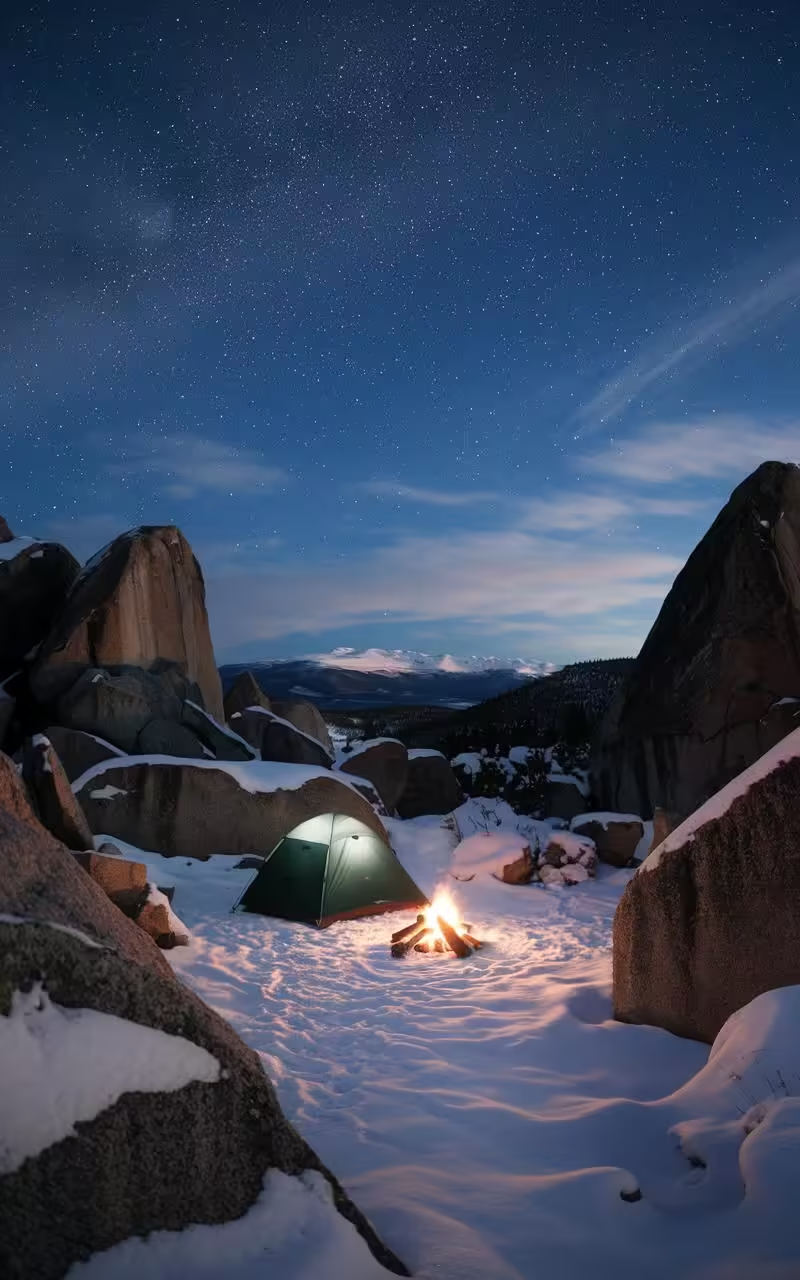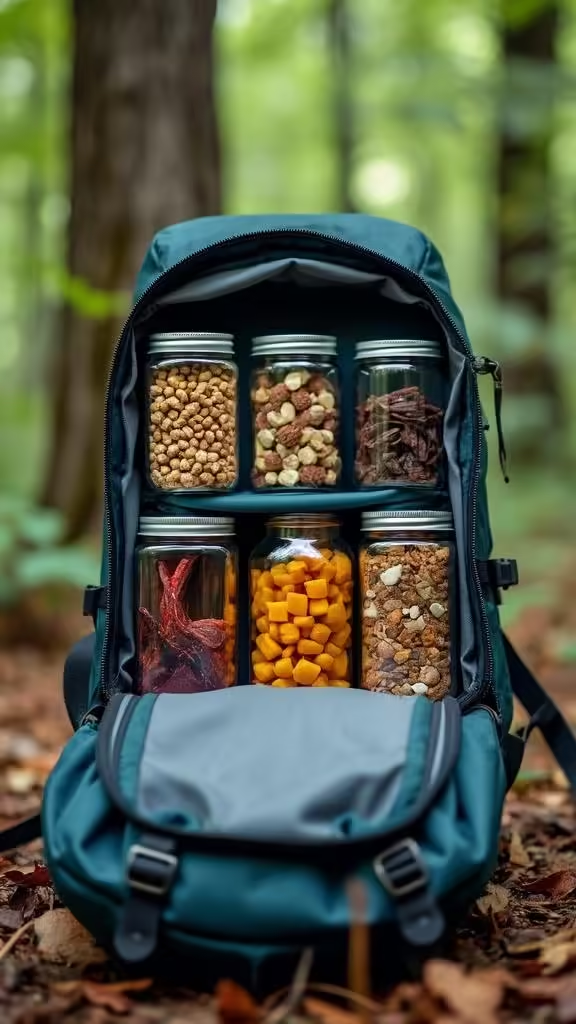Surviving Winter in Your 3-Season Tent: The Ultimate Guide to Not Freezing Your Bum Off
Ever wondered if you could brave the winter wilderness with just your trusty 3-season tent? Well, grab a hot cocoa and settle in, because I’m about to spill the beans on how to turn your fair-weather shelter into a cozy winter haven.

Is Your 3-Season Tent Up for the Challenge?
Let’s face it, your 3-season tent wasn’t exactly built for snowmageddon. Unlike their burly 4-season cousins, these lightweight wonders aren’t designed to shrug off heavy snow or howling winds. But don’t pack away your adventure dreams just yet!
The secret? It’s not about the tent, it’s about you. Your 3-season tent won’t magically grow a thermal lining, but with the right know-how, you can still have an epic winter camping experience.
Turning Your Tent into a Winter Warrior
First things first, let’s talk bones. Your tent’s skeleton needs to be up for the task.
- Ditch the fiberglass: Opt for aluminum or carbon fiber poles. They’re tougher cookies in the cold.
- X marks the spot: Tents with X-frame designs are your best bet for standing up to winter’s wrath.
I learned this the hard way on a chilly expedition in the Cairngorms. My bargain-bin tent with flimsy poles collapsed faster than my dreams of a cozy night under the stars. Lesson learned: invest in quality or invest in misery.

Insulation Station: Keeping Jack Frost at Bay
Now, let’s seal up that tent tighter than a drum. Here’s the lowdown:
- Cover those vents: Use tarps or thermal blankets to minimize drafts.
- Ground game strong: Layer up with a ground tarp and multiple sleeping pads. The higher the R-value, the toastier your tush.
Pro tip: Think of your tent like a thermos. You want to trap that precious body heat inside, not let it escape into the frosty night air.
Anchors Away: Keeping Your Tent Grounded
Winter winds are no joke. Here’s how to keep your tent from becoming an impromptu kite:
- Snow stakes are your new best friends
- Master the art of the deadman anchor
- Build a snow wall like you’re defending the Night’s Watch
Remember, a well-anchored tent is the difference between a good night’s sleep and an unexpected midnight adventure.

Gear Up or Freeze Up: Essential Kit for Winter Camping
Sleeping Bags: Your Cocoon of Warmth
- Temperature ratings are your lifeline. Always go lower than you think you’ll need.
- Add a sleeping bag liner for an extra toasty boost.
According to a study by the Outdoor Industry Association, 68% of winter campers cite inadequate sleeping gear as their biggest challenge. Don’t be a statistic, folks!
Sleeping Pads: Your Barrier Against the Frozen Earth
- R-value is king. Aim for 5 or higher.
- Double up for double the warmth. A foam pad under an inflatable is the dream team.

Clothing: Layer Up Like a Pro
- Think onion, not orange. Multiple thin layers trump one thick layer every time.
- Don’t forget the extremities! Warm socks, hats, and gloves are non-negotiable.
Hot water bottles and hand warmers are your secret weapons. Trust me, future you will thank present you for packing these little miracles.
Setting Up Camp: Location, Location, Location
Where you pitch your tent can make all the difference between a winter wonderland and a frozen nightmare.
- Stay below the treeline to dodge the worst of the wind and snow.
- Use natural windbreaks like boulders or dense trees.
- Orient your tent to minimize wind exposure. Think aerodynamic!

Snow Load Management: Don’t Get Squashed
- Pitch your tent steep and proud to shed snow like a boss.
- Regular snow clearing sessions are your new workout routine.
Remember, a lazy camper is a flat camper. Keep that snow off your roof!
The Great Debate: 3-Season vs 4-Season Tents
Pros of sticking with your 3-season tent:
- Lighter on your back and your wallet
- You already own it (high five for sustainability!)
Cons to consider:
- Less sturdy in extreme conditions
- Can be drafty and colder
According to REI, 4-season tents can be up to 30% heavier than their 3-season counterparts. That’s a lot of extra weight to lug around!
In the end, it’s all about preparation and knowing your limits. With the right gear and mindset, your 3-season tent can be your ticket to winter wonderland adventures.

Staying Warm: The Art of Not Becoming a Human Popsicle
Now that we’ve covered the basics, let’s dive into the nitty-gritty of keeping your body temperature up when the mercury drops.
- Move it or lose it: Regular exercise keeps your blood pumping and your core toasty.
- Eat like a bear prepping for hibernation: Your body needs fuel to generate heat.
- Hydrate, hydrate, hydrate: Dehydration is sneaky in cold weather but just as dangerous.
I once made the rookie mistake of skimping on water during a winter hike. By nightfall, I was so dehydrated I could barely set up camp. Learn from my blunder, folks!
The Condensation Conundrum: Battling the Indoor Rain
Ever woken up to what feels like a personal rain cloud inside your tent? Welcome to the joy of condensation.
- Ventilation is key: Crack a vent even when it’s freezing.
- Use a clothesline to hang damp gear.
- Bring a small towel to wipe down walls in the morning.
Remember, moisture is the enemy of warmth. Keep it at bay, and you’ll be much happier camper.
Emergency Preparedness: Because Mother Nature Doesn’t Play Nice
When you’re miles from civilization in sub-zero temps, being prepared isn’t just smart—it’s survival.
- Always have an emergency kit: First aid, fire starters, and extra food are non-negotiable.
- Know the signs of hypothermia and frostbite.
- Have a bail-out plan and share your itinerary with someone back home.
According to the National Park Service, hypothermia can set in at temperatures as high as 50°F (10°C) if you’re wet or exhausted. Stay vigilant, stay safe.
The Mental Game: Embracing the Chill
Winter camping isn’t just a physical challenge—it’s a mental one too.
- Set realistic expectations: It’s going to be cold, and that’s okay.
- Find joy in the little things: The crunch of snow, the stillness of a winter forest.
- Practice mindfulness: Focus on the present moment, not how cold your toes are.
Remember, discomfort is temporary, but the memories (and bragging rights) last forever.
Leave No Trace: Winter Edition
Responsible camping is crucial year-round, but winter brings its own set of challenges.
- Pack out all waste: Snow doesn’t magically make it disappear.
- Stick to established campsites when possible to minimize impact.
- Be mindful of wildlife: Winter is a tough time for them too.
The Ultimate Winter Camping Checklist
- [ ] Insulated sleeping pad (R-value 5+)
- [ ] Winter-rated sleeping bag
- [ ] Plenty of layers (base, mid, outer)
- [ ] Waterproof, insulated boots
- [ ] Hand and foot warmers
- [ ] High-calorie, easy-to-prepare food
- [ ] Insulated water bottles
- [ ] Emergency kit
- [ ] Snow shovel
- [ ] Extra batteries (they drain faster in cold)
Wrapping Up: Embracing the Winter Wilderness
Winter camping in a 3-season tent isn’t for the faint of heart, but with the right preparation and mindset, it can be an incredibly rewarding experience. You’ll see nature in a whole new light, test your limits, and come away with stories to tell for years to come.
Remember, the key to not freezing your bum off isn’t just about gear—it’s about knowledge, preparation, and a healthy dose of respect for Mother Nature. So go forth, brave the cold, and discover the magic of winter camping. Just don’t forget to zip up that tent!
As you plan your next frosty adventure, keep this guide handy. With these tips and tricks, you’ll be well on your way to surviving winter in your 3-season tent like a pro. Happy camping, and may your adventures be as cool as the temperatures you’re braving!





Leave a Reply